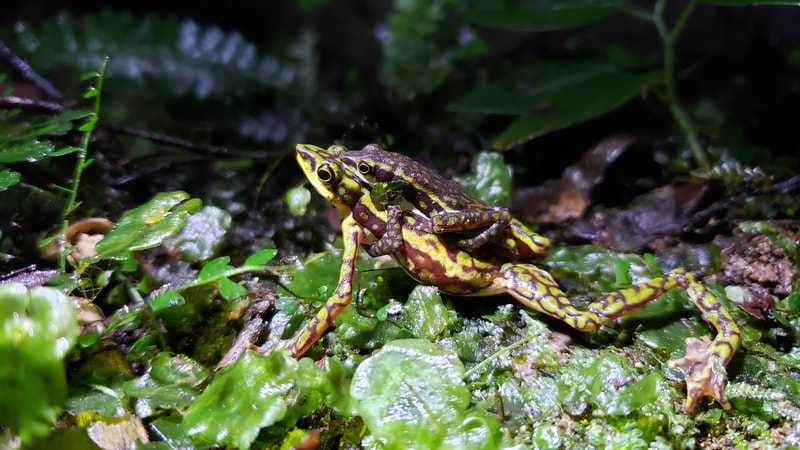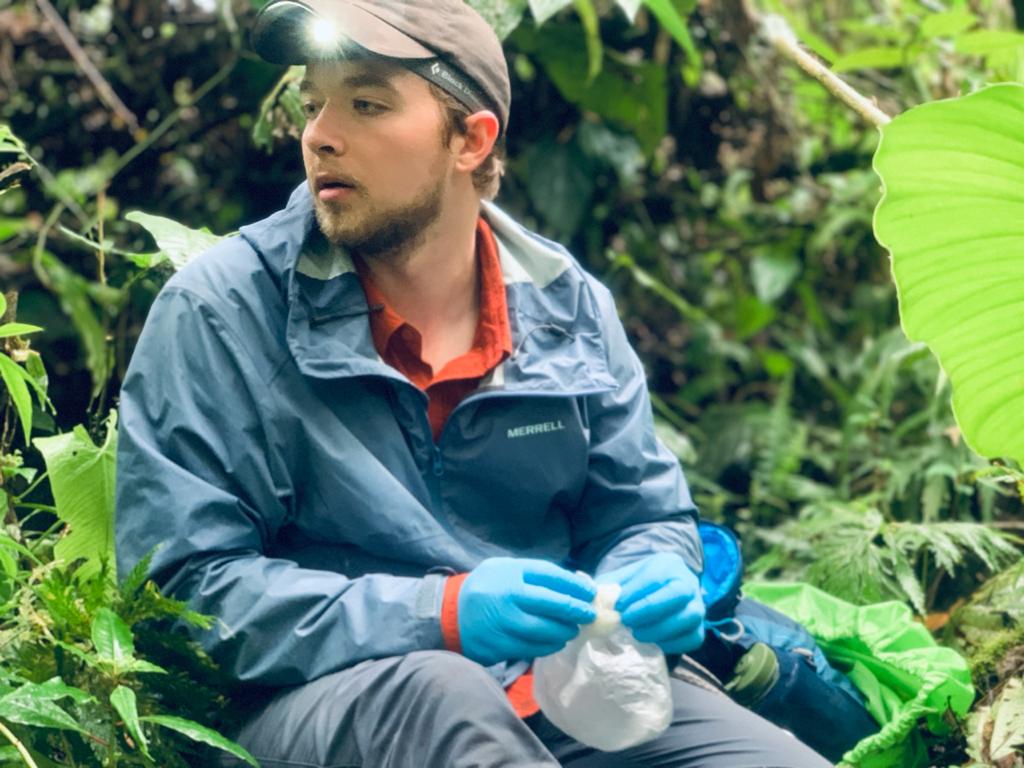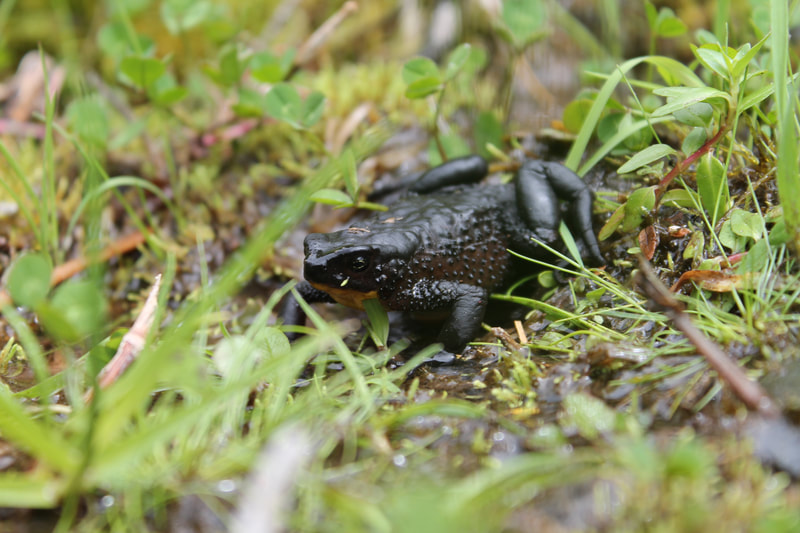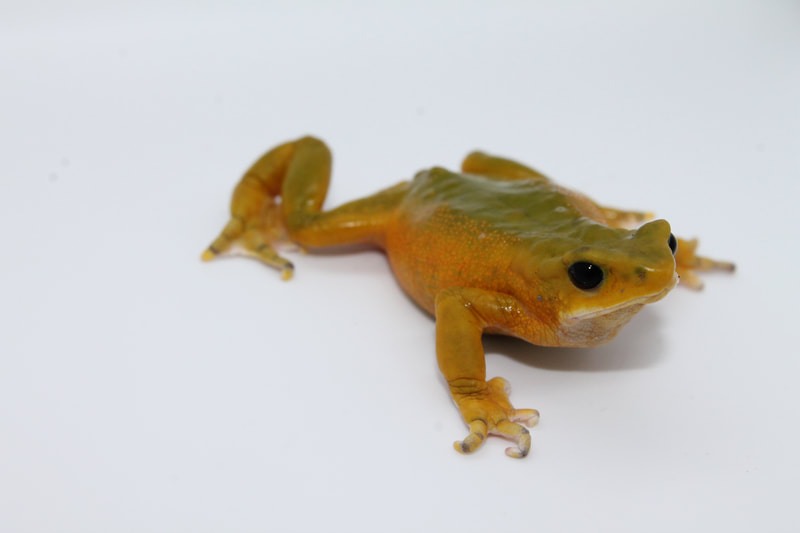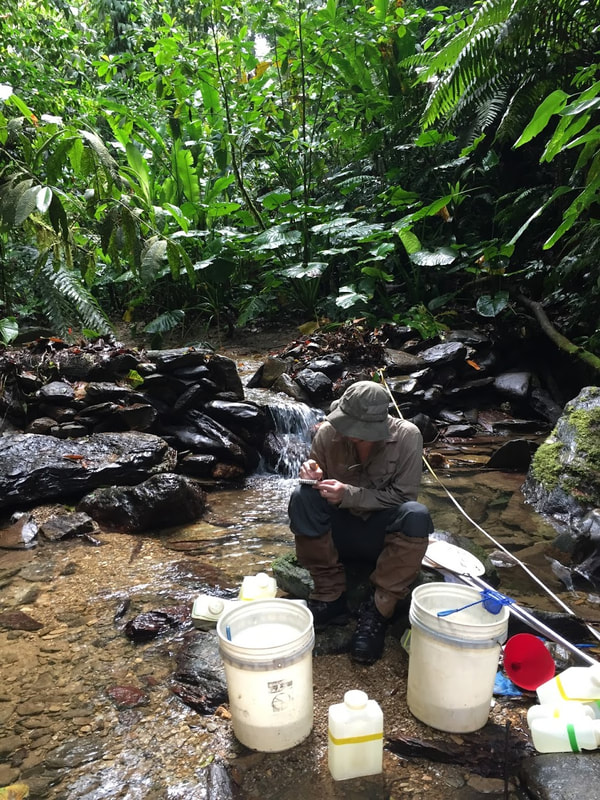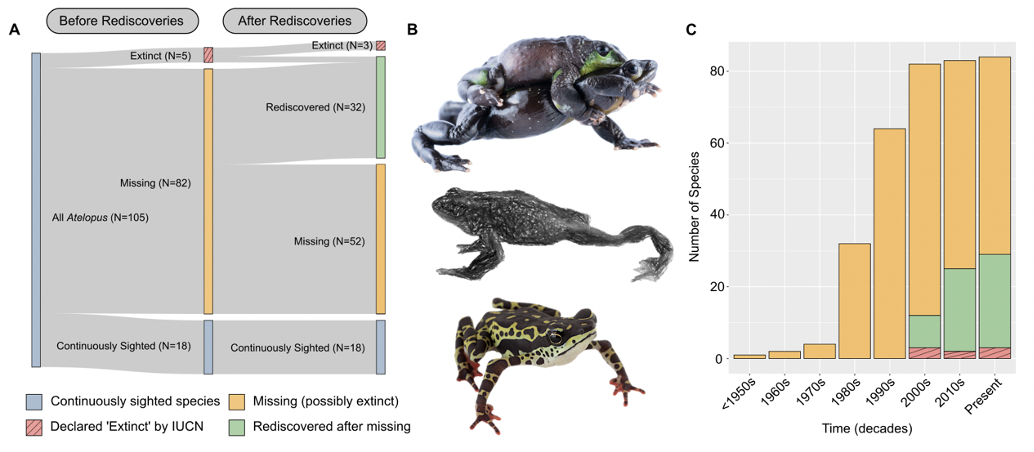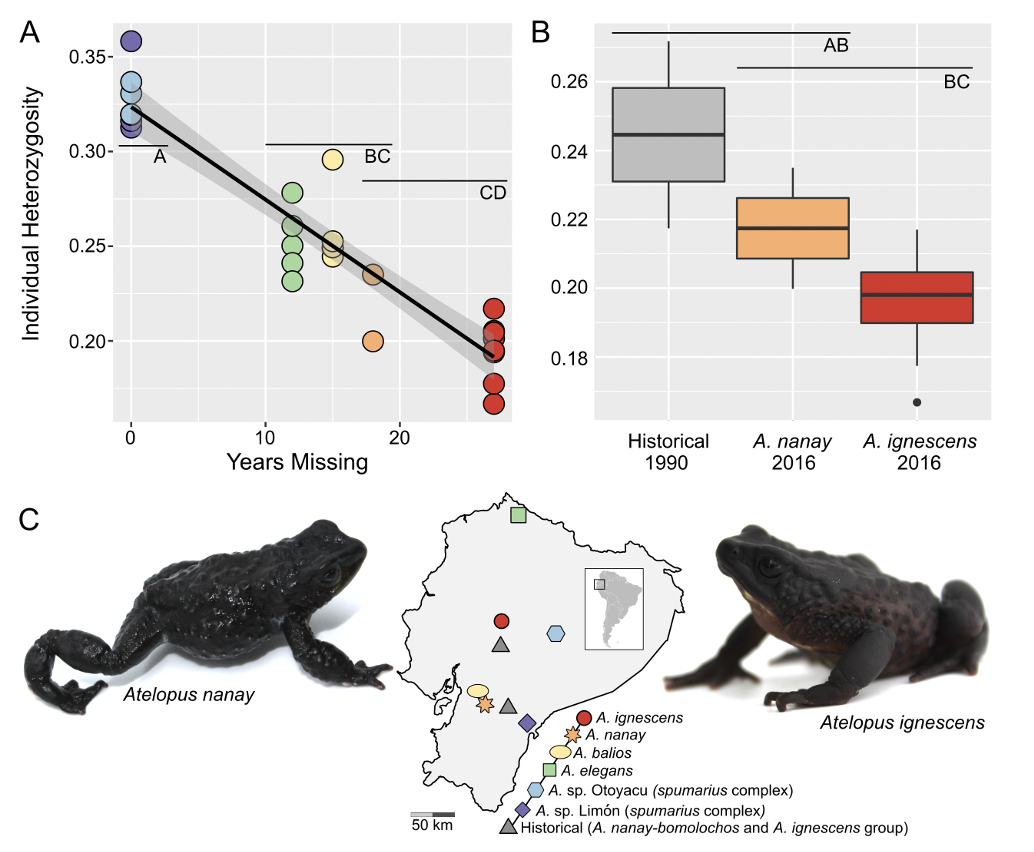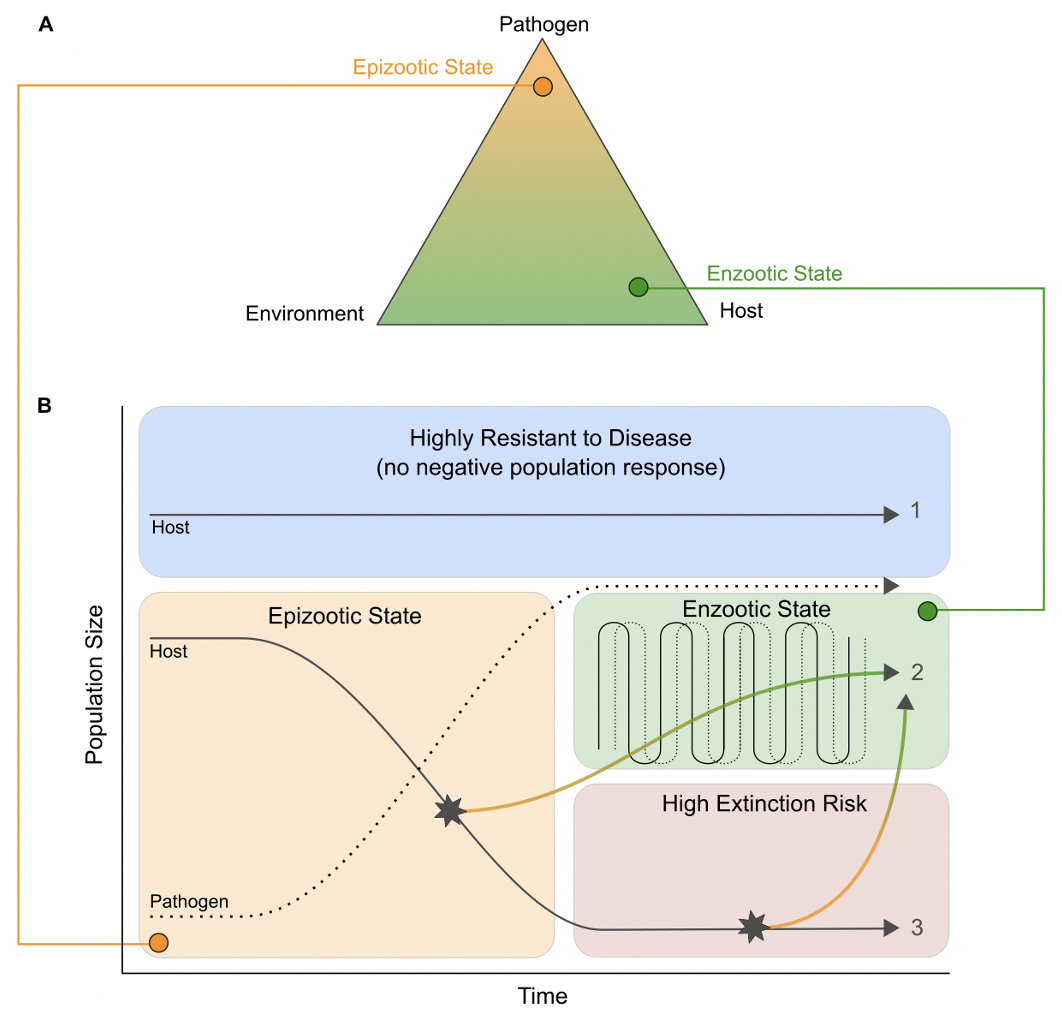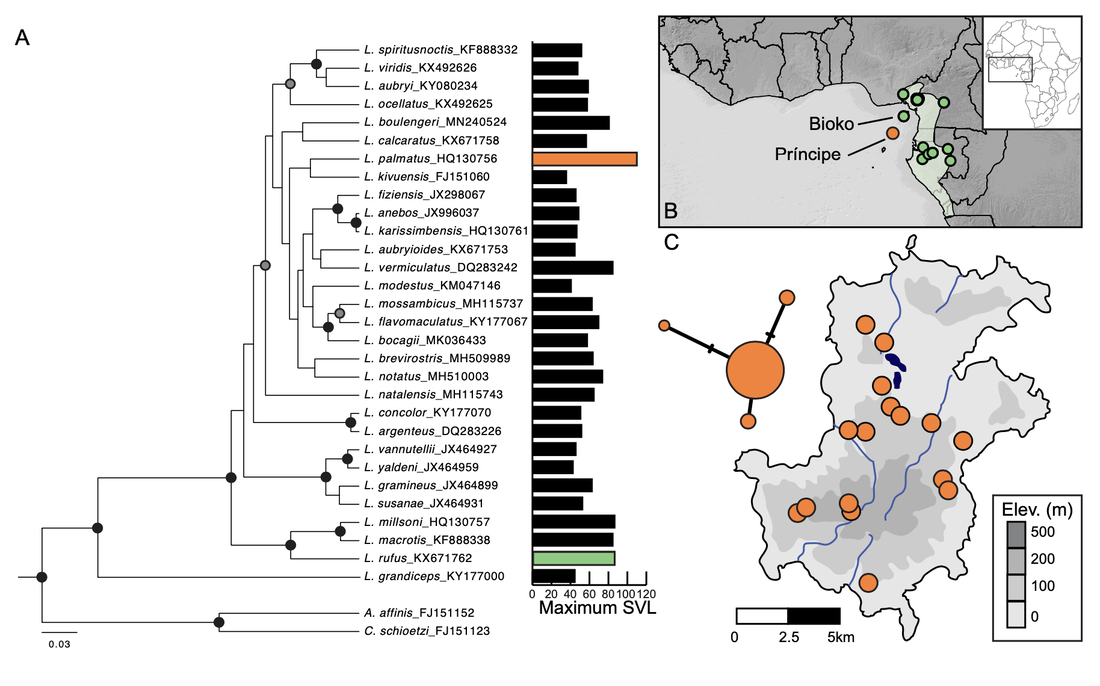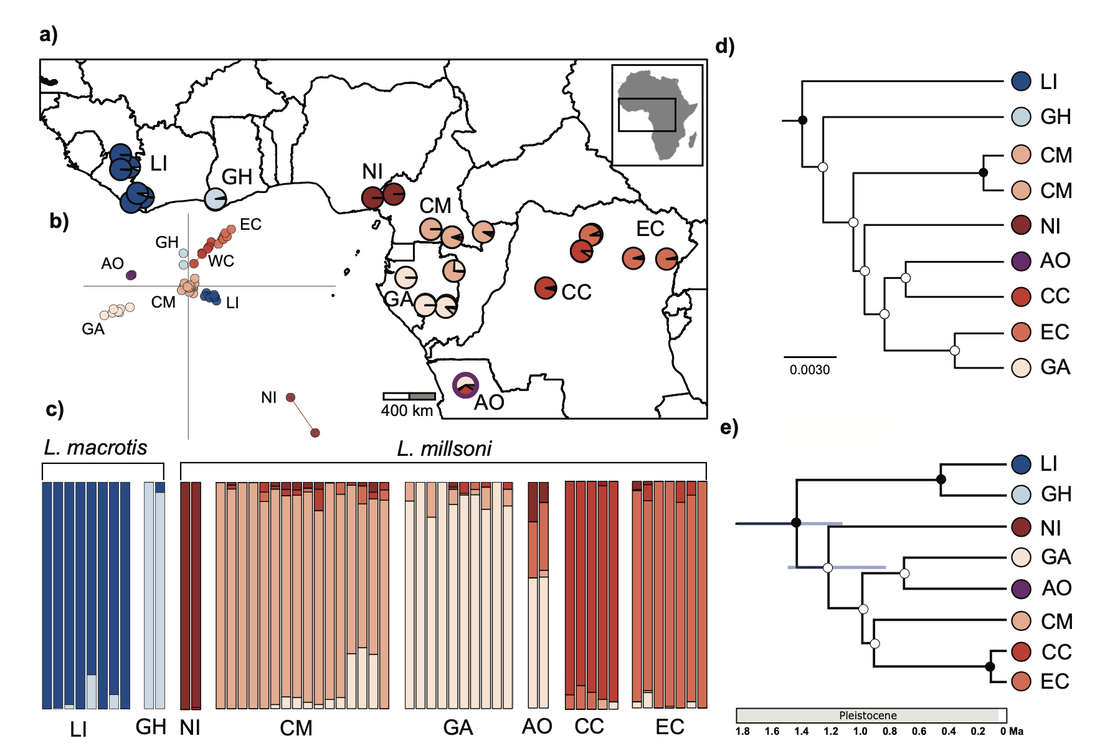I am broadly interested in the ecology, evolution, and natural history of amphibians and reptiles. I am also a conservation biologist, and use these systems to understand eco-evolutionary mechanisms that generate and maintain genetic and biodiversity. Much of my current work combines fieldwork, lab & field experiments, and museum collections to understand mechanisms underlying species declines and persistence.
My research is supported by organizations such as the American Society of Ichthyologists and Herpetologists (ASIH), National Geographic, and the National Science Foundation.
My research is supported by organizations such as the American Society of Ichthyologists and Herpetologists (ASIH), National Geographic, and the National Science Foundation.
Ecological and evolutionary dynamics of species persistence in Harlequin frogs
|
Harlequin frogs (Atelopus) are some of the most emblematic frogs in the global decline narrative, with about 70% of the genus critically endangered or extinct. For many species, the narrative describes abrupt and catastrophic declines starting in the 1980's with presumed extinction after decades of no sightings. However, in recent years, as many as 32 species have been rediscovered (Jaynes et al. 2022. Biological Conservation). We are using this system as a 'natural experiment' to understand how some species have persisted, while others have gone extinct.
Projects underway include: 1) Developing molecular resources for investigation of genomic signatures underlying population declines and potential selection in response to a novel disease 2) Identifying patterns in the skin microbiome of rare and endangered species in rediscovered/persisting communities |
Host-pathogen-environment dynamics of a global amphibian disease
|
Batrachochytrium dendrobatidis (Bd) is a fungal pathogen that causes the disease Chytridiomycosis in amphibians, and has been linked to population declines at a global scale. Research on Bd ecology and interactions with hosts and the environment are crucial for predicting the spread of disease and coexistence with hosts, and informing conservation efforts to curb declines. We are working to understand how Bd disease dynamics shift over time in changing environments.
Projects underway include: 1) Investigating Bd prevalence in a group of rediscovered, but highly susceptible frogs and their surrounding amphibian communities 2) Assessing largely un-tested vectors of transmission using lab experiments and field sampling |
Ecology, evolution, and natural history of amphibians and reptiles
|
I first got into biology by thinking about and studying organisms, and have always been most fascinated with herps. Alongside my applied research, I am interested in uncovering a foundational understanding of the natural & life history of amphibians and reptiles.
Previously, I've worked on African Giant Tree Frogs (Leptopelis), where I set out to determine the mainland relative of an island endemic, Leptopelis palmatus and showed that the island endemic is not closely related to any of the mainland giants, suggesting gigantism evolved repeatedly in the genus (Jaynes et al. 2021. Herpetological Journal). |
|
We then characterized genetic and phenotypic diversity in the mainland species complex and showed that diversification occurred through physical barriers, climate, and reproductive traits during secondary sympatry (Jaynes et al. 2022. Molecular Ecology). Projects underway include: 1) Eco-physiological differences between closely related bullfrog (invasive) and green frog (non-invasive) tadpoles 1) Long-term mark-recapture project of painted and Blanding's turtles in Michigan |
Banner photo: Foggy mountain landscape in Northern Ecuador. Photo credit: Morley Read
